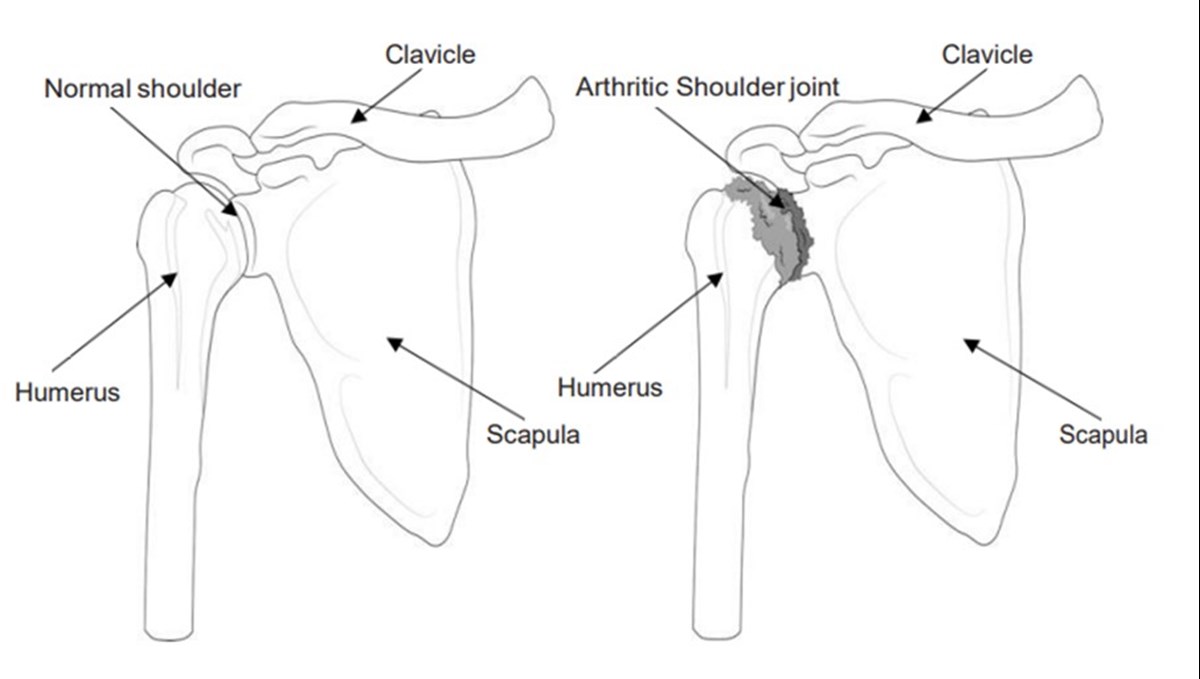Shoulder joint arthritis
On this page
Symptoms of shoulder joint arthritis, self help and treatment.
What is shoulder joint arthritis?
The shoulder is made up of three bones:
- the scapula (shoulder blade)
- the humerus (upper arm bone)
- the clavicle (collarbone)
The part of the scapula that makes up the socket of the shoulder joint is called the glenoid. The ball and socket joint where the glenoid (scapula) and the humerus join is the shoulder (glenohumeral) joint.
The most common cause of shoulder joint arthritis is 'joint wear' called osteoarthritis (OA). This is where the smooth cartilage surface covering the joints becomes thin and rough. The ends of the bone can then rub together causing pain.
More information
- Shoulder Rehabilation Book - ShoulderDoc
- Osteoarthritis of the elbow and shoulder - Versus Arthritis
- Other self help links for orthopaedic conditions
Orthopaedic conditions
-
Hip osteoarthritis
Symptoms of hip osteoarthritis, self help and treatment.
-
Knee osteoarthritis
Symptoms of knee osteoarthritis, self-help and treatment.
-
Shoulder joint arthritis
Symptoms of shoulder joint arthritis, self help and treatment.
-
Shoulder impingement
Symptoms of subacromial shoulder pain, self help and treatment.
-
Hand and wrist conditions
Common hand and wrist conditions, self-help and treatment guides.

